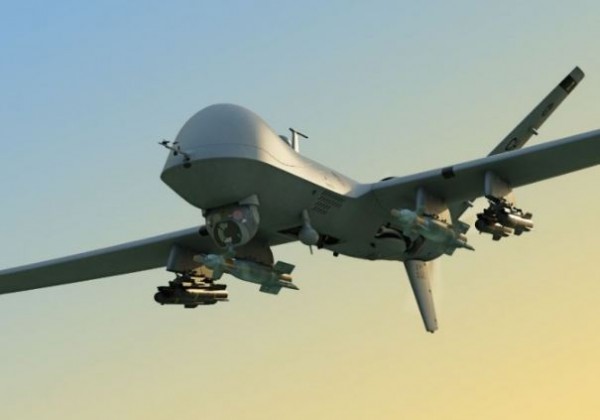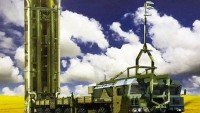US will use Laser-Armed Aerial Drones to Shoot-down Chinese ICBMs
| Arthur Dominic Villasanta | | Oct 29, 2016 08:43 AM EDT |
(Photo : USAF) General Atomics MQ-9 Reaper in hunter killer mode.
The U.S. Air Force is on the cusp of deploying remotely piloted aircraft (RPA) or aerial drones such as the General Atomics MQ-9 Reaper as a forward defense against intercontinental ballistic missiles (ICBMs) launched by China against the United States.
Missile defense is one of the new applications being explored for laser-armed RPAs (also called unmanned aerial vehicles or UAVs) by the Missile Defense Agency (MDA), the federal agency responsible for developing a layered defense against ballistic missiles (ICBMs and IRBMs).
Like Us on Facebook
"A UAV-borne laser would be capable of acquiring, tracking and eventually destroying an enemy missile at a much lower cost than the existing BMDS," said MDA Director Vice Admiral J.D. Syring.
"Beyond intercept, these UAVs will also support ascent and midcourse tracking and target discrimination, as an alternative targeting method to ground or ship-based radars, alongside space-based sensors.
RPAs with Airborne Infrared (ABIR) sensors have been tested in the role of a "forward picket" to spot enemy missile launches and track them through their flight trajectory. With their sophisticated technology, RPAs can now discriminate between warheads and decoys.
More important, RPAs will also be able to shoot down ballistic missiles by firing powerful lasers at them during the missile's ascent stage from hundreds of miles away.
MDA MQ-9 RPAs successfully performed missile tracks during the recent Pacific Dragon missile defense exercise held last June at the Pacific Missile Range Facility in Kauai off the coast Hawaii.
Sensors on these drones will ultimately improve the ability of missile defense sensors to track what are called "cold body targets," or missiles flying in space after rocket burnout.
By tracking such targets through their time of flight, defenders can get better target discrimination, thus reducing reaction time, and increasing the probability of hit.
These UAV-based remote sensors have help decrease the reaction time of the AEGIS ballistic missile defense system mounted aboard U.S. navy warships.
TagsU.S. Air Force, remotely piloted aircraft, RPA, aerial drones, General Atomics MQ-9 Reaper, Missile Defense, Missile Defense Agency, intercontinental ballistic missiles
©2015 Chinatopix All rights reserved. Do not reproduce without permission
EDITOR'S PICKS
-

Did the Trump administration just announce plans for a trade war with ‘hostile’ China and Russia?
-

US Senate passes Taiwan travel bill slammed by China
-

As Yan Sihong’s family grieves, here are other Chinese students who went missing abroad. Some have never been found
-

Beijing blasts Western critics who ‘smear China’ with the term sharp power
-

China Envoy Seeks to Defuse Tensions With U.S. as a Trade War Brews
-

Singapore's Deputy PM Provides Bitcoin Vote of Confidence Amid China's Blanket Bans
-

China warns investors over risks in overseas virtual currency trading
-

Chinese government most trustworthy: survey
-

Kashima Antlers On Course For Back-To-Back Titles
MOST POPULAR
LATEST NEWS
Zhou Yongkang: China's Former Security Chief Sentenced to Life in Prison

China's former Chief of the Ministry of Public Security, Zhou Yongkang, has been given a life sentence after he was found guilty of abusing his office, bribery and deliberately ... Full Article
TRENDING STORY

China Pork Prices Expected to Stabilize As The Supplies Recover

Elephone P9000 Smartphone is now on Sale on Amazon India

There's a Big Chance Cliffhangers Won't Still Be Resolved When Grey's Anatomy Season 13 Returns

Supreme Court Ruled on Samsung vs Apple Dispute for Patent Infringement

Microsoft Surface Pro 5 Rumors and Release Date: What is the Latest?














